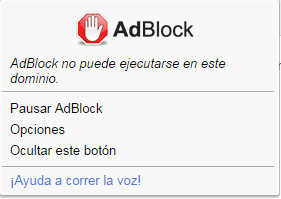Written by Ramón Saquete
Index
Surely many of you know those extensions and plugins for browsers that block or remove ads on websites. There are many users who use them and there are many websites that live only on advertising and are seriously affected by these extensions. However, there are measures we can take to mitigate losses.
First of all, let’s analyze the situation a bit:
Is it ethical to use these extensions?
On the one hand, the user has the right to browse as he wants, if he does not want to see ads, it is likely that if we force him to see them he will not want to click on them. On the other hand, the website owner has the right to earn something for the contents or services he offers, since he has to dedicate time, effort and money to do so, and many times advertising is the only means he has to achieve it. Not only that, but it also has the right to decide how to display ads. If the owner of the website decides to place annoying interstitial ads, thus losing most of its visitors, he should also have the right to do so, since it is his website and it is he himself who has to assess whether the loss of users compensates him for using such an aggressive type of advertising.
False positives
There are many occasions when content, such as images or menu items, that are not ads, are blocked due to the heuristics they use, such as removing anything that has the word “ad” in it. In these cases we can solve it by renaming the blocked element.
Other times what they do is block JavaScripts of external plugins, which offer some functionality that has nothing to do with advertising. In these cases there is little we can do.
It is interesting to try to install this type of extensions to see what it does with our page and to see if there is something that we can avoid that it hides.
Detect extensions such as Adblock
The first step in taking action against these extensions is to detect that the user is using them.
There are many different ways, using JavaScript, to detect that AdBlock is being used on our site. The basis of these techniques is to add something, which will not be seen on the page, but that we know AdBlock will block it y then check whether this item still exists or has been hiddenIf you do not use Adblock, you can use any of the techniques Adblock uses, such as setting the height to zero.
Another strategy is to check whether the ads that should appear on the page have been removed or hidden.
It is best to combine several ways of detecting the extension and test them, so that we are more likely to detect it for whatever version the user has installed.
Measuring losses
Once detected that the user is using Adblock, we can register it in Google Analytics or any other tool, to know how many impressions we are losing and make estimates of clicks and losses. This will help us decide how aggressive countermeasures should be taken when we detect users using these extensions.
Countermeasures
If the options of offering acceptable ads according to Adblock or paying them to add you to their whitelist don’t seem like valid options, you can take any of the following measures that I have ordered, from the most aggressive to the least.
- Hide the entire website and show the user a message telling them to remove the extension to continue browsing the site.
- Hide the website and offer you two options: unblock the extension or pay a subscription.
- Attempt to display other advertisements in the blocked areas. If we have our own advertisers, we can implement their display so that it is not detected by Adblock, at least until a user raises the alarm to Adblock. If all our ads come from famous platforms such as Adsense, we can not opt for this option, since their code is well known by these extensions.
- Display buttons to donate money in blocked areas.
- Let the user see the content, but show them a message politely asking them to deactivate the extension so that we can pay the service costs.
And you, what action would you take on your website?